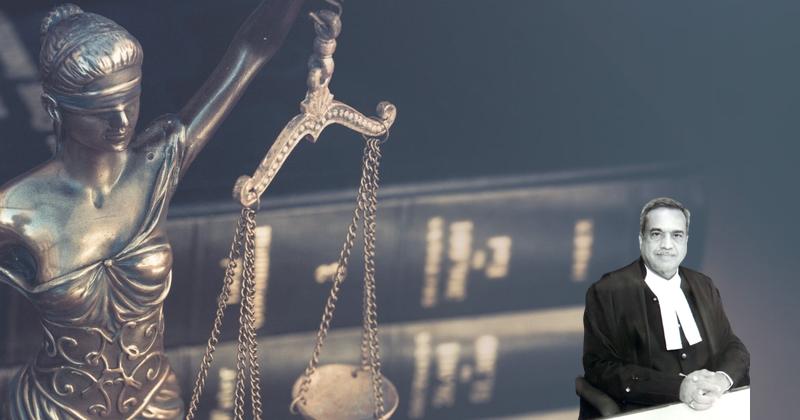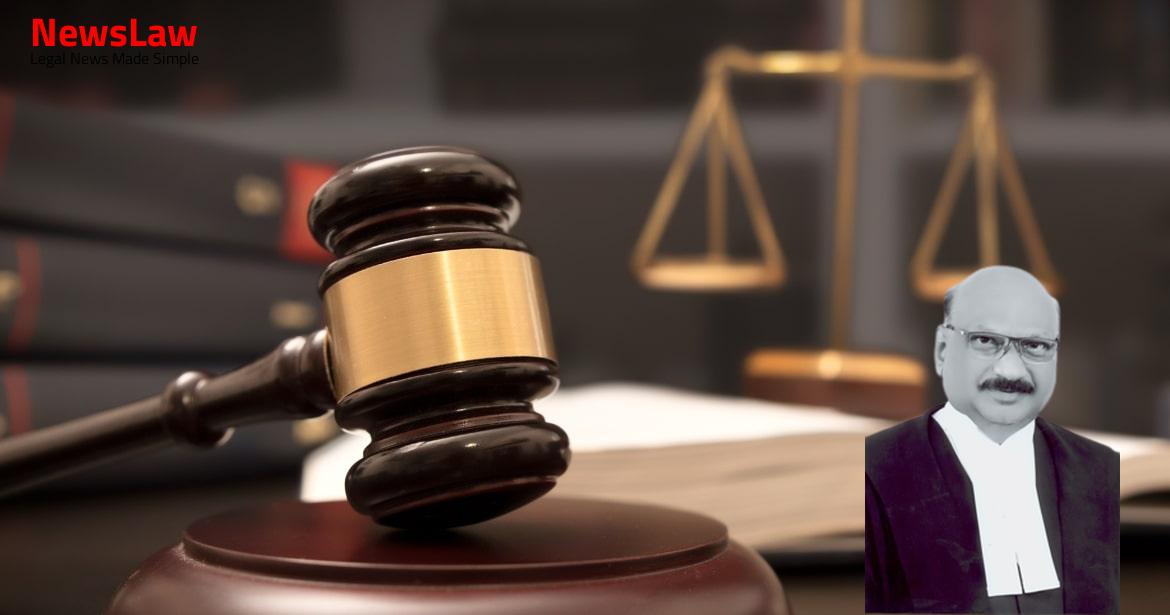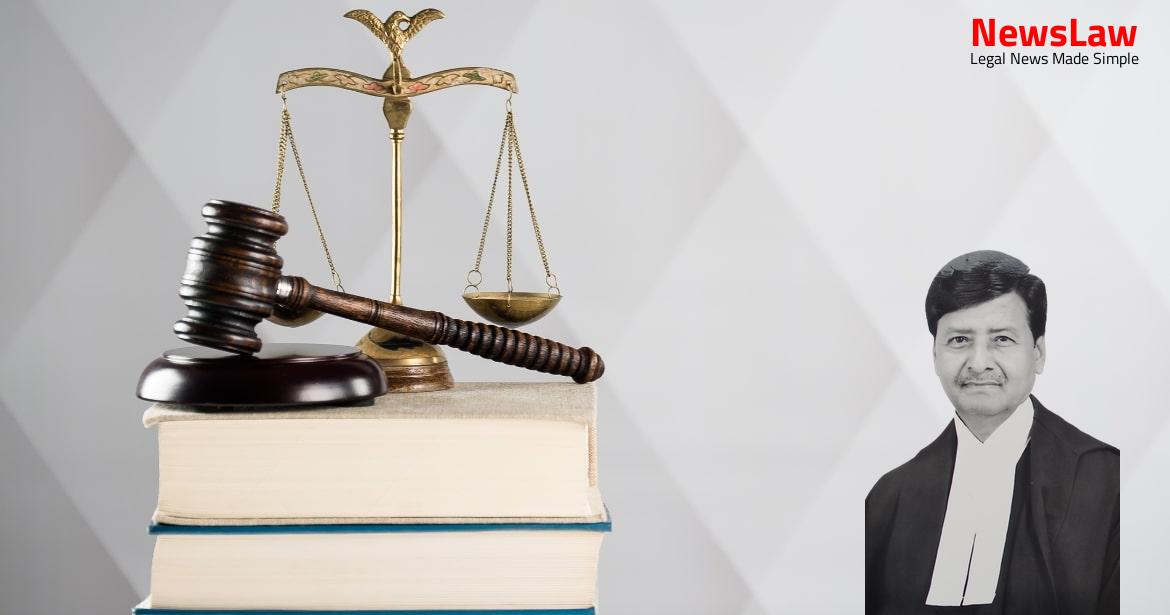As per the same the NCLAT dismissed the appeal preferred by the appellant against order dated 27.06.2019 in CP (IB) No 516/9/NCLT/AHM/2018 of the National Company Law Tribunal, Ahmedabad Bench, (NCLT) dismissing the application filed under Section 9 of the IBC, in its capacity as operational creditor of ‘Shah Alloys Limited’ (hereinafter referred to as the ‘respondent’). Heard learned Senior Counsel for the appellant Shri Shyam Divan and Mr. Guru Krishna Kumar, learned Senior Counsel for the respondent. It is the case of the appellant that by virtue of Section 22 of SICA there was a moratorium on the respondent and therefore, it could not have proceeded against the respondent for outstanding dues, thenceforth, without obtaining the permission of the BIFR. According to the appellant, BIFR became functus officio and all proceedings pending before it, including the case of the respondent, were abated and several sections of IBC, including Sections 8 and 9, came into effect on 01.12.2016. Thereafter, the appellant filed an application under Section 9 of the IBC before NCLT, Ahmedabad seeking initiation of Corporate Insolvency Resolution Process (CIRP) in its capacity as Operational Creditor of the respondent. In the light of the aforesaid factual backdrop and contentions the appellant would contend that the NCLT and NCLAT had failed to look into and appreciate the cumulative effect of sub-sections (1) and (5) of Section 22 of SICA while dismissing the application under Section 9, IBC as barred by limitation.
Also Read: https://newslaw.in/case-type/criminal/suppression-of-material-facts-and-fraud-on-the-court/
Resisting the contentions of the appellant and supporting the impugned judgment the respondent would contend that both NCLT and NCLAT had rightly appreciated the factual positions thereon obtained in the case on hand and applied the provisions correctly, to arrive at the finding that the application filed by the appellant under Section 9, IBC was barred by limitation. It is also contended that such a discrepancy also exists with respect to the date of cause of action as going by Section 9 application the alleged debt fell due on and from November, 2011 and as per the Demand Notice the so-called debt fell due on and from 9th July, 2012 and in either case, Section 9 application was barred by limitation as it was filed only in the year 2018. But the question is whether any party, which falls under the expression ‘Operational Creditor’ under the IBC claims to have operational debt due from an industrial company and the cause of action for recovery of the same had accrued much earlier than 01.12.2016, but prevented from enforcing the right against such company in view of statutory prohibition under Section 22 (1), SICA, could initiate CIRP despite the passage of three years since the cause of action claiming the protection of exclusion of the period of suspension by virtue of Section 22 (5), SICA? – (1) Where in respect of an industrial company, an inquiry under section 16 is pending or any scheme referred to under section 17 is under preparation or consideration or a sanctioned scheme is under implementation or where an appeal under section 25 relating to an industrial company is pending, then, notwithstanding anything contained in the Companies Act, 1956 (1 of 1956) or any other law or the memorandum and articles of association of the industrial company or any other instrument having effect under the said Act or other law, no proceedings for the winding up of the industrial company or for execution, distress or the like against any of the properties of the industrial company or for the appointment of a receiver in respect thereof [and no suit for the recovery of money or for the enforcement of any security against the industrial company or of any guarantee in respect of any loans or advance granted to the industrial company] shall lie or be proceeded with further, except with the consent of the Board or, as the case may be, the Appellate Authority.” (5) In computing the period of limitation for the enforcement of any right, privilege, obligation or liability, the period during which it or the remedy for the enforcement thereof remains suspended under this section shall be excluded.” Thus, Section 22 (1), SICA as extracted above, would make it clear that there was a statutory bar to take to any proceeding for realisation of a right referred to in the said Section against an industrial company when once an enquiry under Section 16, SICA is pending against it or any scheme referred to under Section 17 thereof is under preparation or consideration or a scheme is under implementation or where an appeal under Section 25 relating to an industrial company is pending, except with the consent of the Board or the Appellate Authority, as the case may be. A two-Judge Bench decision of this Court in Paramjeet Singh Patheja’s case (supra), more particularly, paragraph 43 (vii), is relied on by the appellant to support its claim for exclusion of the period from 31.08.2010 to 01.12.2016 while computing the period of limitation for filing applicants under Section 9, IBC. It is relevant to note in this context that the decision in Kailash Nath Agarwal’s Case (supra) was not brought to the notice of the later bench while deciding Paramjeet Singh Patheja’s Case (supra). The three-judge bench, after noting the contentions raised before and the findings of the two-judge bench in Kailash Nath Agarwal’s case (supra), found that it did not deal with the question regarding the scope of protection afforded to the industrial company concerned, under Section 22 (1) of SICA. “application for recovery” cannot specifically be described as proceedings for execution, distress or the like against any of the properties, but it is certainly a proceeding which results in and in fact had resulted in the execution and distress against the property of the Company and is therefore liable to be construed as a proceeding for the execution, distress or the like against any of the properties of the industrial company. In this context, it may be remembered that the proceedings by way of an application for recovery according to a summary procedure as provided under the RDDB Act are not referred to in Section 22 simply because the RDDB Act had not then been enacted.
… We shall therefore proceed to examine the provisions of the Act on the footing that the test for determining whether the Government is bound by a statute is whether it is expressly named in the provision which it is contended it, or whether it “is manifest that from the terms of the statute, that it was the intention of the legislature that it shall be bound”, and that the intention to bind would be clearly made out if the beneficent purpose of the statute would be wholly frustrated unless the Government were bound.” Thus, it is obvious that the three-Judge Bench in KSL & Industries Ltd. Moreover, it was held therein that there would be no purpose in construing the Parliament intended that such an application for recovery by summary procedure should lie or be proceeded with, but only its execution be interdicted or inhibited. In view of the provisions under Section 22 (1) of SICA and the decisions in Paramjeet Singh case (Supra) and in KSL & Industries Limited (supra), it is worthwhile to note that in the case on hand it was the industrial company (respondent herein) that approached the BIFR under the provisions of SICA and got it declared as ‘sick company’ by filing Case No 13 of 2010; that it is thereafter that the appellant filed Miscellaneous Application No 432/2013 thereon praying, inter-alia, to permit it under Section 22 of SICA to approach a Civil Court of appropriate jurisdiction for recovery of the above-mentioned dues along with interest; that the said application was disposed of only on 09.09.2015, as per Annexure-A40 proceedings, that too, only with a direction to the respondent company to incorporate the dues of the applicant in the DRS and that as per Annexure-A40, Case No.13 of 2010 and M.A.
Thus, obviously, proceedings under SICA were then pending before the BIFR when the default from the part of the respondent allegedly occurred and by virtue of Section 22 (1), SICA and the decisions referred above, the appellant could not have, then, resorted to any legal proceedings for enforcing any right which may result in recovery from the properties of the respondent company.
When the appellant being a party to BIFR in the sense, on intervention obtained an order to the respondent company to incorporate its dues in the Draft Rehabilitation Scheme (DRS) in an application seeking permission to effect recovery of the dues and such a stage had not reached till 01.12.2016, whether there would be any justification to hold that on the repeal of SICA it could not claim the benefit flowing from the provisions under Section 22 (5) of SICA, subject to the provisions under the relevant laws governing the appropriate forum chosen? 12.2016, as hereunder: “(b) On such date as may be notified by the Central Government in this behalf, any appeal preferred to the Appellate Authority or any reference made or inquiry pending to or before the Board or any proceeding of whatever nature pending before the Appellate Authority or the Board under the Sick Industrial Companies (Special Provisions) Act, 1985 (1 of 1986) shall stand abated: Provided that a company in respect of which such appeal or reference or inquiry stands abated under this clause may make reference to the National Company Law Tribunal under the Insolvency and Bankruptcy Code, 2016 within one hundred and eighty days from the commencement of the Insolvency and Bankruptcy Code, 2016 in accordance with the provisions of the Insolvency and Bankruptcy Code, 2016: Provided further that no fees shall be payable for making such reference under Insolvency and Bankruptcy Code, 2016 by a company whose appeal or reference or inquiry stands abated under this clause.”. The first proviso to sub-clause (b) only makes reference to the time limit applicable to the company in respect of which the appeal or reference or enquiry or any such proceeding thus stood abated under the said sub-clause. A scanning of the stated sub-clause (b) and the provisos would not reveal or indicate prescription of any such specific time limit as regards the opposite parties in the abated reference, inquiry or proceeding for proceeding with their available remedy under IBC. Section 6, IBC provides that where any corporate debtor commits a default, a financial creditor, an operational creditor or the corporate debtor itself may initiate CIRP in respect of such corporate debtor in the manner provided under Chapter II of IBC. (2) The corporate debtor shall, within a period of ten days of the receipt of the demand notice or copy of the invoice mentioned in sub-section (1) bring to the notice of the operational creditor— (a) existence of a dispute, if any, or record of the pendency of the suit or arbitration proceedings filed before the receipt of such notice or invoice in relation to such dispute; (b) the payment of unpaid operational debt— (Underline supplied) 19. – The provisions of the Limitation Act, 1963 (36 of 1963) shall, as far as may be, apply to the proceedings or appeals before the Adjudicating Authority, the National Company Law Appellate Tribunal, the Debt Recovery Tribunal or the Debt Recovery Appellate Tribunal, as the case may be.” Obviously, Section 238A, IBC makes the provisions of the Limitation Act, 1963 applicable to computation of the period of limitation in regard to proceedings before the Adjudicating Authority and the other forums. It will be seen from a reading of Section 8 (2) (a) that the corporate debtor shall, within a period of 10 days of the receipt of the demand notice, bring to the notice of the operational creditor the existence of a “dispute”. It is thus clear that the expression “default” bears the same meaning in Sections 7 and 8 of the Code, making it clear that the corporate insolvency resolution process against a corporate debtor can only be initiated either by a financial or operational creditor in relation to debts which have not become time-barred.
Educational Services Private Limited (supra) would thus reveal that Articles 137 and 5 of the Limitation Act, 1963 are applicable to applications filed under Sections 7 and 9 of IBC. It be so, the position is that the period of limitation is three years from the right to apply accrues but the delay is condonable on sufficient grounds. ICICI Bank, (2018) 1 SCC 407], B.K. Educational Services [B.K. Union of India, (2019) 4 SCC 17], K. Phoenix ARC (P) Ltd., (2019)
10 SCC 353] respectively, the following basics undoubtedly come to the fore: (a) that the Code is a beneficial legislation intended to put the corporate debtor back on its feet and is not a mere money recovery legislation; (b) that CIRP is not intended to be adversarial to the corporate debtor but is aimed at protecting the interests of the corporate debtor; (c) that intention of the Code is not to give a new lease of life to debts which are time-barred; (d) that the period of limitation for an application seeking initiation of CIRP under Section 7 of the Code is governed by Article 137 of the Limitation Act and is, therefore, three years from the date when right to apply accrues; (e) that the trigger for initiation of CIRP by a financial creditor is default on the part of the corporate debtor, that is to say, that the right to apply under the Code accrues on the date when default occurs; (f) that default referred to in the Code is that of actual non-payment by the corporate debtor when a debt has become due and payable; and (g) that if default had occurred over three years prior to the Paras Gupta & Associates, (2019)
11 SCC 633, it has clearly been held that the limitation period for application under Section 7 of the Code is three years as provided by Article 137 of the Limitation Act, which commences from the date of default and is only extendable by application of Section 5 of the Limitation Act, if any case for condonation of delay is made out. Bank Ltd., (2019) 9 SCC 158], this Court rejected the contention suggesting continuing cause of action for the purpose of application under Section 7 of the Code while holding that the limitation started ticking from the date of issuance of recovery certificate dated 24-12-2001. Veer Gurjar Aluminium Industries (P) Ltd., 2019 SCC OnLine NCLAT 295] leaves nothing to guess that such observations by the Appellate Tribunal had only been assumptive in nature without any foundation and without any basis.
Paras Gupta & Associates, (2019) 11 SCC 633] it had already been made clear that the date of the Code’s coming into force on 1-12-2016 was wholly irrelevant to the triggering of any limitation period for the purposes of the Code, this Court said : (Sagar Sharma case [Sagar Sharma v. In short, as relates an application under Section 9, IBC the date of coming into force of IBC, viz, 01.12.2016 would not form the trigger point of limitation and the period of limitation for an application for initiating of CIRP under Section 9, IBC would be three years from the date when the right to apply accrues as provided by Article 137 of the Limitation Act and further that the right to apply under the IBC would accrue on the date when default occurs and it is extendable only by application of Section 5 of the Limitation Act. When the limitation period for initiating CIRP under Section 9, IBC is to be reckoned from the date of default, as opposed to the date of commencement of IBC and the period prescribed therefor, is three years as provided by Section 137 of the Limitation Act, 1963 and the same would commence from the date of default and is extendable only by application of Section 5 of the Limitation Act, 1963 it is incumbent on the Adjudicating Authority to consider the claim for condonation of the delay when once the proceeding concerned is found filed beyond the period of limitation. In the case on hand, indubitably, the question whether the delay occurred in the matter of filing of application under Section 9, IBC is condonable or not, was not considered. When once it is so found we would have remanded the matter for consideration of the question of limitation afresh, but for the fact that the application under Section 9, IBC was dismissed assigning reason of existence of ‘pre-existing dispute’ as well. When we come to clause (c) of Section 9(3), it is equally clear that a copy of the certificate from the financial institution maintaining accounts of the operational creditor confirming that there is no payment of an unpaid operational debt by the corporate debtor is certainly not a condition precedent to triggering the insolvency process under the Code.
The requisite elements necessary to trigger the Code are: (i) occurrence of a default; (ii) delivery of a demand notice of an unpaid operational debt or invoice demanding payment of the amount involved; and (iii) the fact that the operational creditor has not received payment from the corporate debtor within a period of 10 days of receipt of the demand notice or copy of invoice demanding payment, or received a reply from the corporate debtor which does not indicate the existence of a pre-existing dispute or repayment of the unpaid operational debt.
Under Section 8(2), the corporate debtor can, within a period of 10 days of receipt of the demand notice or copy of the invoice mentioned in sub-section (1), bring to the notice of the operational creditor the existence of a dispute or the record of the pendency of a suit or arbitration proceedings, which is pre-existing — i.e. The moment there is existence of such a dispute, the operational creditor gets out of the clutches of the Code.” A scanning of the decisions referred supra, would reveal that existence of a ‘pre-existing dispute’ should entail dismissal of an application filed under Section 9 IBC at the threshold. Within a period of 10 days of the receipt of such demand notice or copy of invoice, the corporate debtor must bring to the notice of the operational creditor the existence of a dispute and/or the record of the pendency of a suit or arbitration proceeding filed before the receipt of such notice or invoice in relation to such dispute [Section 8(2) (a)].
It is clear, therefore, that once the operational creditor has filed an application, which is otherwise complete, the adjudicating Authority must reject the application under Section 9(5)(2) (d) if notice of dispute has been received by the operational creditor or there is a record of dispute in the information utility. So long as a dispute truly exists in fact and is not spurious, hypothetical or illusory, the adjudicating Authority has to reject the application.” (emphasis supplied) 33.
Case Title: SABARMATI GAS LIMITED Vs. SHAH ALLOYS LIMITED (2023 INSC 10)
Case Number: C.A. No.-001669 / 2020



